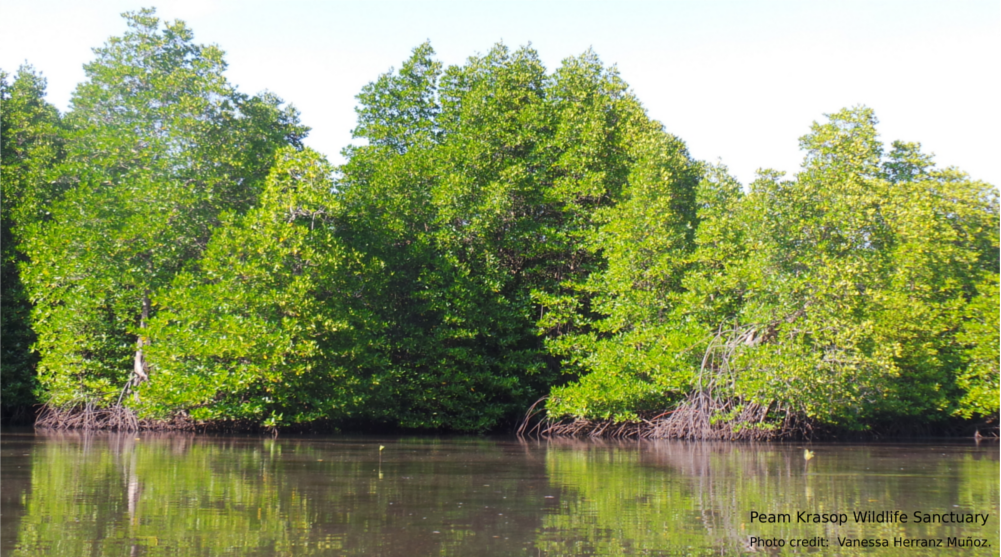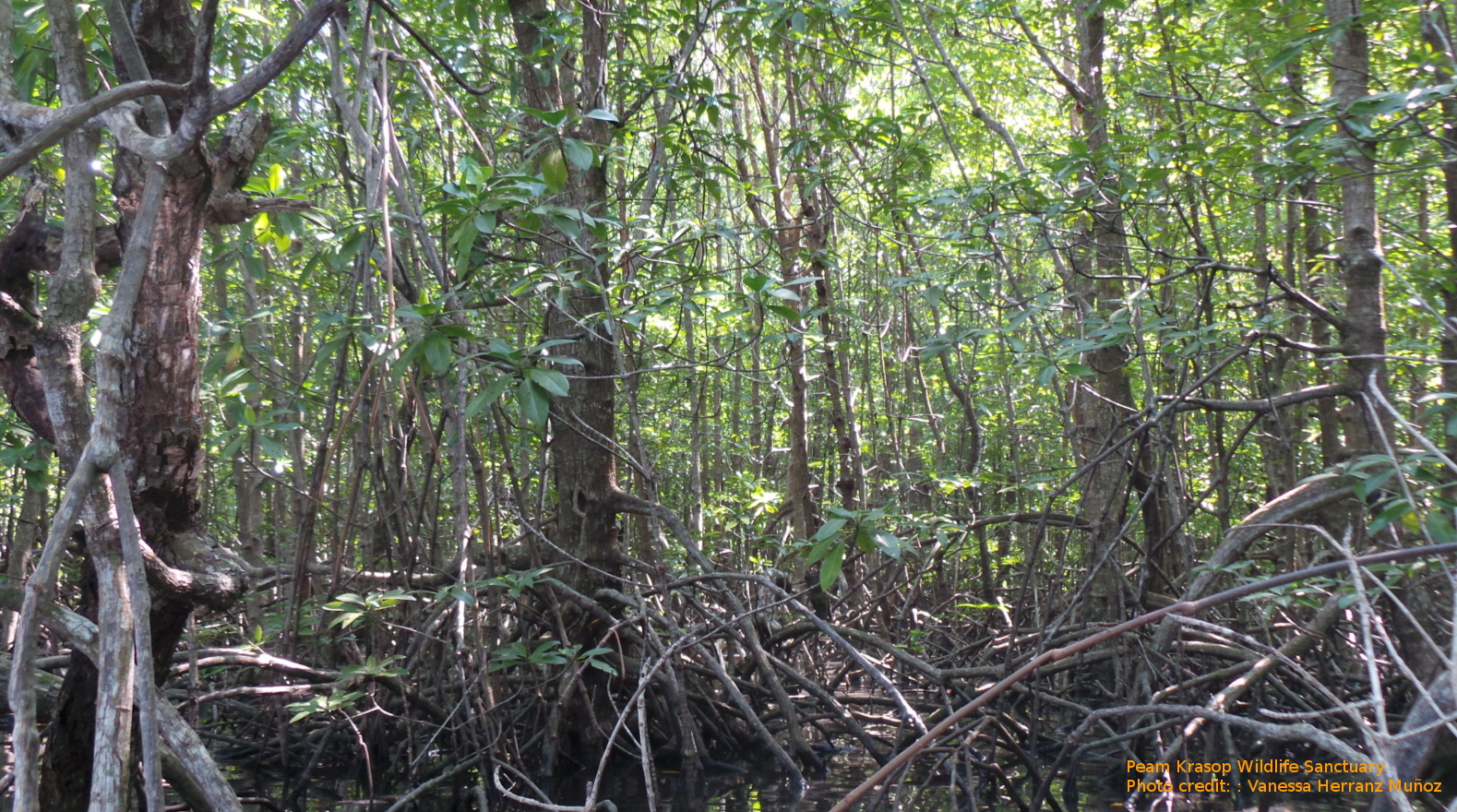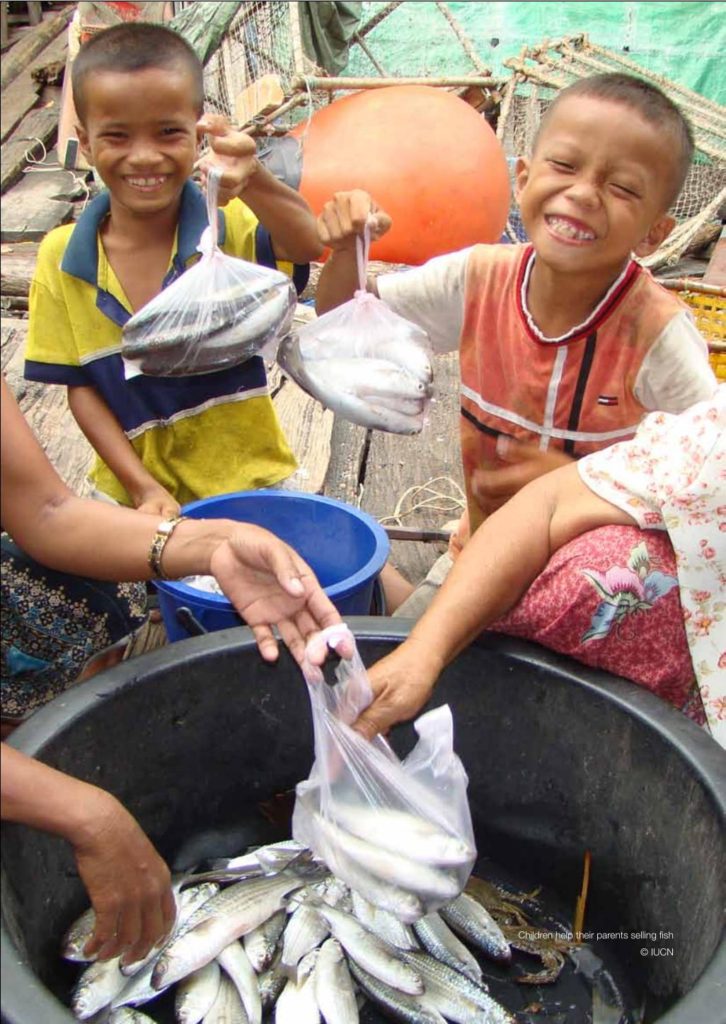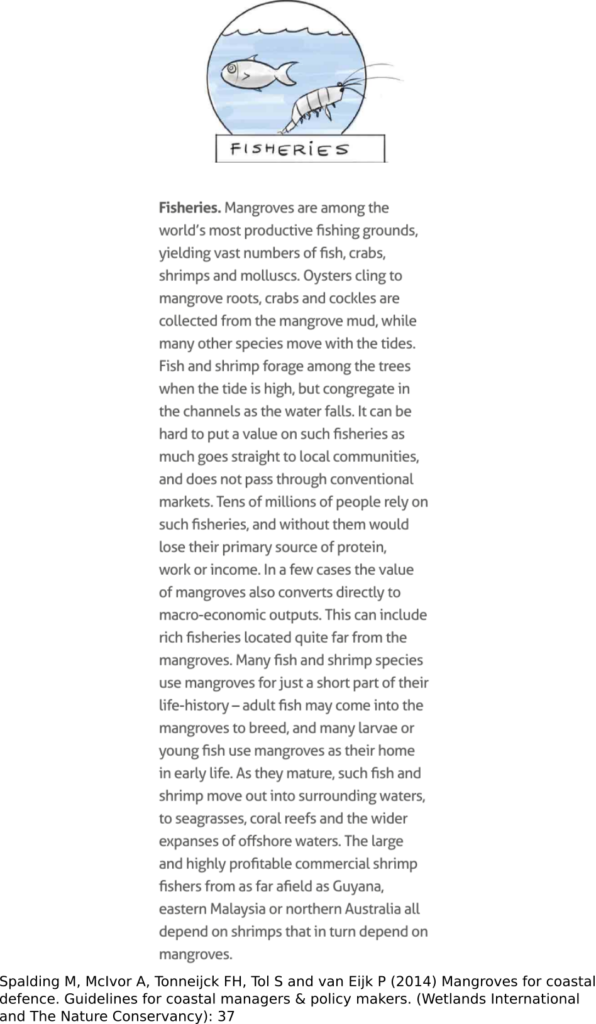The Fishing Tiger in the Kingdom of Water
The following is an imagined history of Fishing Cat in Cambodia.
Once upon a time Cambodia’s vast wetlands – covering a large part of the country- would have been ideal habitat for the water-loving Fishing Cat, known locally as “Kla Trey” or Fishing Tiger. It’s easy to imagine the Cat stalking the flooded forest around the great Tonle Sap lake and floodplains of the mighty Mekong river- not to mention extensive mangroves up and down the coast where they roam to this day.

As magnificent as these watery landscapes are, they throw up challenges when it comes to conducting scientific surveys – alongside Cambodia’s checkered history- thus species such as Fishing Cat are under-surveyed and often mistaken for their smaller Leopard Cat cousins.
Kingdom of Water
Life in Cambodia has always been intimately connected with water. The Cambodia creation myth is led by the serpent deity or Naga, protector of water. The story goes that Soma, the daughter of the Naga Raja or Naga King married Kaundinya, a Brahmin, who came from India by sea, landing on the banks of the Mekong.
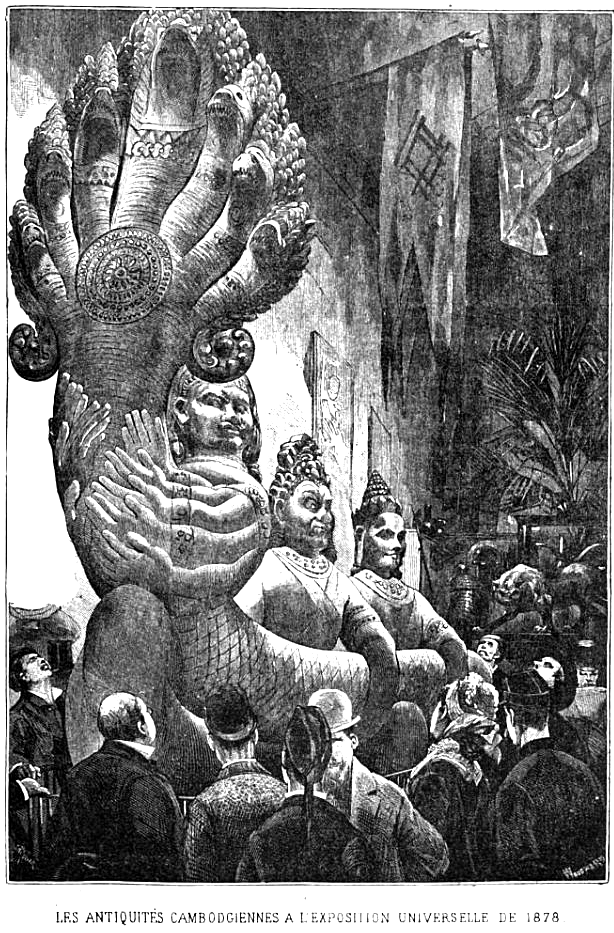
Naga statue
Following the ceremony, the Naga Raja swallowed the waters to reveal the land of Cambodia as a wedding gift to the couple. The Cambodian people sprang from their union and thus it is said that Cambodians are “Born of the Naga”.
The epic Khmer Empire once covered a huge territory, at the heart of which sat Angkor Thom, a mega city that stretched over 1,000 sq km- the most extensive urban complex of the preindustrial world.

The success of the Khmer Empire owes a lot to the Angkorians’ ingenious water management system, dating back to the 9th century. Water was collected from the Kulen hills, stored in massive reservoirs or “barays” connected by vast series of canals used for transportation, irrigation and flood control, with surplus water carried to the Tonle Sap lake to the south.
Fishing Cat set in stone
Despite this taming of the waters – which altered the natural hydrology of the region- Fishing Cats were at home along the waterways. This bas relief on the eastern wall of Bayon Temple leads us to believe that Fishing Cats were a common enough sight to be included in carvings of everyday life.
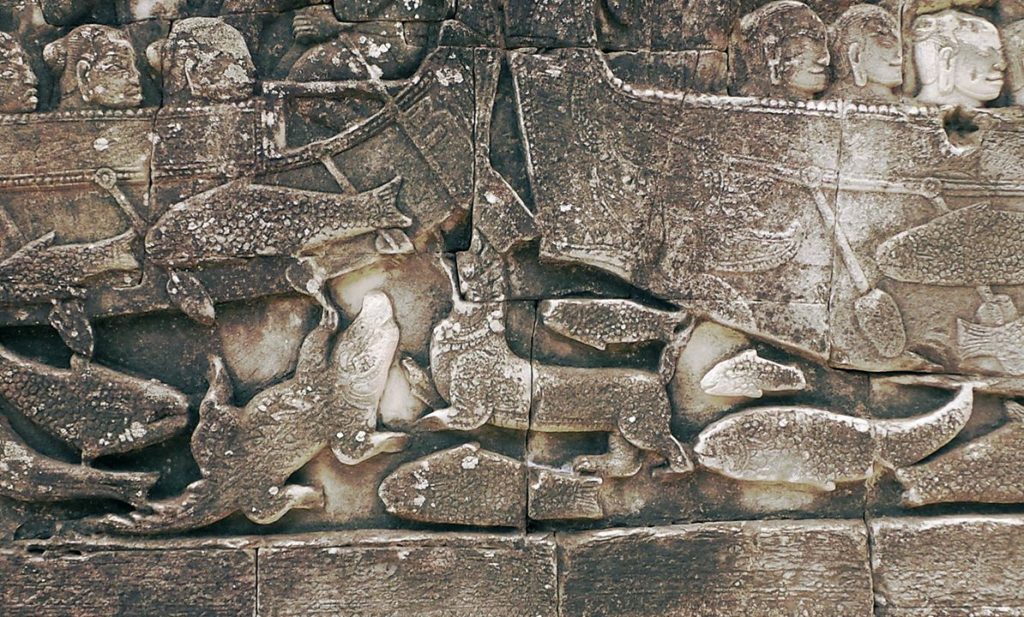
Fishing Cat on Bayon Temple
Although not confirmed as Fishing Cat by historians or archaeological experts, we believe it speaks for itself- a cat in the water with short legs, short tail, long body.. what other cat could it be?!
Despite its high sophistication, the hydraulic engineering at Angkor “was not enough to prevent its collapse in the face of extreme environmental conditions,” posits Mary Beth Day, a paleolimnologist at the University of Cambridge.
After the demise of the Empire in the 1400s, we can suppose that habitat in Cambodia may have sustained a healthy population of Fishing Cats for a number of centuries. Perhaps disturbances and conflicts occurred between Fishing Cat and humans living along the same water courses- both were competing for the same food after all! There are no written or visual records of Fishing Cat from the era which followed- to our knowledge.
19th century: Changing habits, changing habitats
More systematic agricultural conversion of wetlands and increase in human population, together with trophy hunting throughout Indochina likely threatened Fishing Cat populations in Cambodia in modern times.

From Henri de Monestrol’s 1952 book, Chasses et Faune D’Indochine (Hunting and Wildlife of Indochina)
20th century: going hungry; going hunting
From the 1960s onwards, hardship and hunger in Cambodia’s Vietnam War and Khmer Rouge era likely increased hunting pressure on Fishing Cats as more people turned to forest resources.

21st century
Today, Cambodia is home to one of the largest and diverse freshwater fisheries in the world (So & Touch 2011); the mighty Tonle Sap lake. The flooded forest and freshwater mangroves around the Lake are ideal habitat for Fishing Cats- not to mention the abundant prey! A number of small-scale studies have been conducted but none has yielded evidence of Fishing Cat presence around the Tonle Sap.
Human population density is high in certain areas, and there is considerable pressure upon Tonle Sap fisheries. Cambodia’s wetlands cover over 30% of the country’s land area, with some putting estimates of the Cambodian population who work on seasonally inundated land as high as 80% (WWT).
Making history
In contemporary times, there was only one camera-trap record of Fishing Cat in Cambodia from 2003 (Rainey & Kong, 2010).

Single camera-trap record of Fishing Cat in Cambodia from 2003 (Rainey & Kong, 2010).
That changed in 2015 when the first targeted survey photographed Fishing Cats at two sites. This was a historic discovery which provided much needed evidence that Fishing Cat were present in the country.
Fishing cat found in Cambodia
Pictures of the Endangered fishing cat (Prionailurus viverrinus) – the first in Cambodia for more than a decade – provide welcome evidence that these elusive felines still survive in some parts of the country.
This is where the Kla Trey | Cambodian Fishing Cat Project comes in!
The Project is born!
Of the two sites where Fishing Cat presence was recorded, Peam Krasop Wildlife Sanctuary (PKWS) was selected as the primary site on which to focus research and conservation efforts.
We collaborate with environmental NGOs active in the area, including BirdLife, Naturelife, Conservation International and Flora & Flauna International. Working on the ground to protect the Cardamom Rainforest Landscape are Wildllife Alliance, with whom we share data, particularly on sightings and seizure of illegally held wildlife, which is often transferred to their rescue centre Phnom Tamao for rehabilitation and possible release.
In 2016, Wildlife Alliance’s mobile environmental education unit, Kouprey Express delivered workshops to PKWS communities in partnership with the Cambodian Fishing Cat Project.


These relations mean that if evidence of Fishing Cats elsewhere in Cambodia comes to light, we are the first to know.
Fishing Cats under threat
Sadly, we were notified of the killing of a Fishing Cat in retaliation for raiding fishing nets within PWKS shortly after the 2015 CBC survey.

That’s why we conduct ongoing Natural Resource Management questionnaires; raising awareness of wildlife populations, and striving to enable livelihood diversification within fishing communities, together with all-important training of local wildlife rangers in the use of ecological and law enforcement monitoring technology, SMART.




The search for Fishing Cat continues!
We don’t have evidence of Fishing Cat outside of PKWS and Ream National Park (the secondary site where presence was detected in the CBC 2015 survey) yet – but we won’t rule out the possibility of Fishing Cat persisting elsewhere in Cambodia.





